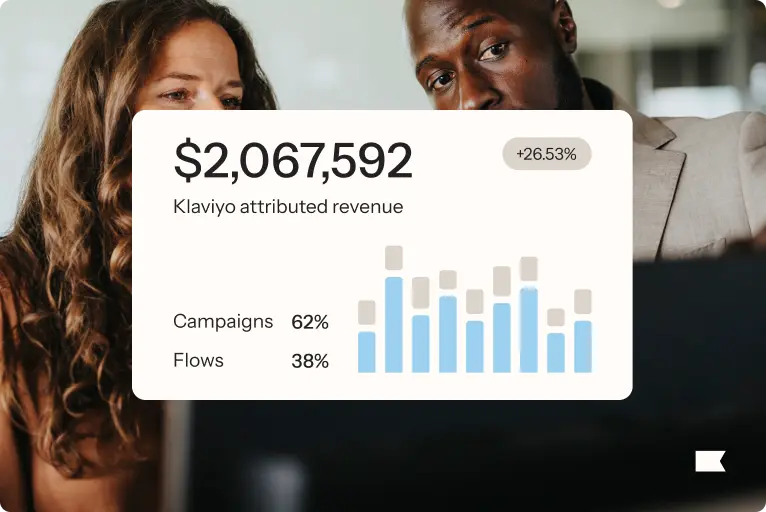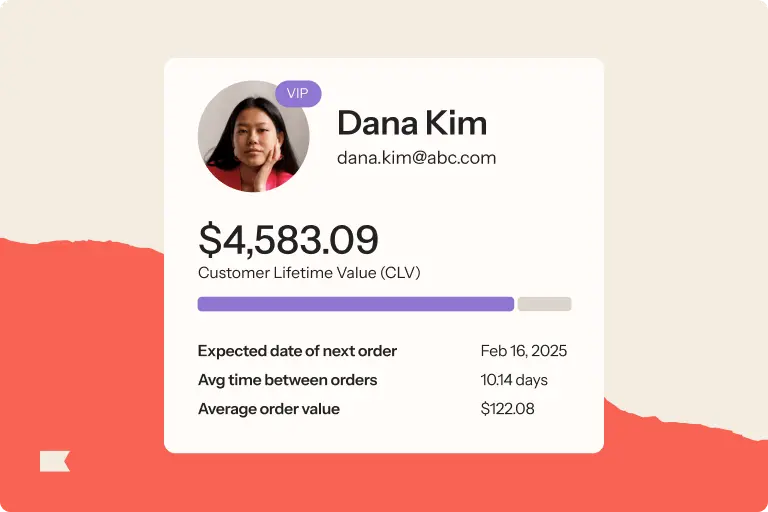7 ways to reduce your unsubscribe rate for increased retention and engagement

Let’s face it: if your list isn’t growing—or at least stable—your business isn’t growing.
With acquisition costs rising, once you’ve got someone on your list, it’s worth the effort to try to keep them subscribed, engaged, and ready to buy.
Your unsubscribe rate, which you can find in your marketing reporting, might seem like a minor metric, but it’s a key piece of your marketing strategy. Maintaining and growing healthy email and SMS lists is crucial—if too many people are unsubscribing, your list will shrink, and so will your revenue.
Not only that—too many unsubscribes can signal to your inbox provider that you’re sending content your recipients don’t want, thereby hurting your sender reputation and leading to more of your marketing messages landing in spam.
Your unsubscribe rates may be high for several reasons:
- You purchased a list (which you should never do) and the “subscribers” didn’t opt in to receive your emails or SMS messages.
- You’re sending too many messages.
- You’ve set the wrong expectations, and subscribers are receiving content they aren’t interested in.
- Your email design isn’t accessible or appealing.
- You aren’t segmenting properly, and you’re sending content that isn’t relevant to the audience.
- Your messages are repetitive, i.e., you’re offering the same discount over and over.
Generally, you want to keep your email unsubscribe rate under 1% and your SMS unsubscribe under 0.5%.
Keep reading for best practices to decrease your unsubscribe rates.
1. Personalize, personalize, personalize—through segmentation
The best marketing is connecting with individuals, when someone feels seen and heard. This is exactly why segmentation is such a valuable tool.
Tailor your email and SMS messages to individual preferences, behaviors or simple customer properties like their names, making each interaction feel like a conversation rather than a generic blast. In fact, segmented emails drive 2x the open rates and 3x the revenue per recipient compared to batch-and-blast sends.
2. Make sure your customer journey is integrated
Email campaigns, automated flows, SMS messages, and push notifications can all create a cohesive omnichannel approach to drive a better customer experience. But it’s important to know which channel to message a certain customer in, and not be too noisy in the others. This will help keep the relationship between you and your subscribers enthusiastic.
Ping your customers in the wrong channel, and watch your unsubscribe rate go up. Get clear on where they want to hear from you through preference management, then, segment your audiences.
“Brands need to plan across channels,” says Michael Pattison, lead digital strategist at Klaviyo. “Look holistically at how to use those channels to drive effectiveness in each one. In most cases, that means not sending the exact same message in all channels.”
Brands need to plan across channels. Look holistically at how to use those channels to drive effectiveness in each one. In most cases, that means not sending the exact same message in all channels.
3. Power up your conversions with automated flows
Automated flows can help you lower your unsubscribe rates by delivering timely, relevant content that keeps your audience engaged and committed to your brand journey.
Klaviyo’s recent benchmarks report found that these automations tended to have the highest RPR:
- Abandoned cart flow—$3.65
- Welcome series flow—$2.65
- Abandoned browsing flow—$1.07
- Post-purchase flow—$0.41
Of course, you will surely get sign-ups just for the discount in the welcome flow.
“Plenty of consumers just want to receive their welcome promo code, place their order and then unsubscribe,” says Rose-Marie Clément, content strategist and email marketing specialist at Novatize. “While we’ll never be able to completely stop this behavior, we can tell our new subscribers the benefits they’ll get from receiving our emails, whether it’s early access to sales, exclusive discounts, or personalized product recommendations.”
We’ll never be able to completely stop consumers who just want the welcome promo code and then unsubscribe, but we can tell our new subscribers the benefits they’ll get from receiving our emails.
4. Make preference management clear and easy
Your preferences page should be up-to-date and clearly allow subscribers to choose:
- What kind of content they receive from you, e.g., newsletters, new product updates, promotions, etc.
- How often they receive email or SMS messages from you, e.g., daily, weekly, or monthly
- Which channels they hear from you on: email, SMS, push.
It’s a good idea to include a link to your manage preference page in the header or footer of your emails.
“Allowing customers to opt-down is a great way to turn an opt-out into a better engaged subscriber,” says Michael Pattison. “They’re saying, ‘I like you, but not that much.’
Pro tip: Use the information you collect on your preferences management page to guide your segmentation for future campaigns.
5. Enable global unsubscribes
Typically, when a subscriber opts out of receiving one type of email message, they’re expecting to not hear from your brand again. But if they’re on multiple lists, they may still get messages from you.
That’s why it’s a good idea to enable global unsubscribe. That way, when someone unsubscribes from a campaign or an automation, they will be globally unsubscribed and suppressed from all lists.
Visit our Help Center to see how to do this for your email program in Klaviyo.
Pro tip: Set up an SMS automation that sends a text asking if a subscriber wants to keep getting texts once they’ve opted out of emails.
6. Consider your cadence
Depending on what feedback you collect on your preferences page, you may simply be emailing or texting your lists too frequently. While sending frequently is important for warming, receiving too many marketing messages is a frequent complaint that can lead to unsubscribes.
Building your sending schedule based on customer engagement will help you maintain a good relationship with your subscribers.
Visit our Help Center for a step-by-step tutorial on how to create a sending schedule for email and SMS based on engagement.
7. Clean your lists monthly
Proactively setting aside time to clean your lists every month is a great practice that will help your deliverability, sender reputation, and unsubscribe rate. If you remove or suppress people who aren’t interacting with your emails, they won’t need to hit the unsubscribe button.
Be sure to remove any:
- Unengaged subscribers (people on your email list that don’t interact with your emails)
- Misspelled email addresses
- Fake email addresses and phone numbers
Pro tip: Set up a sunset flow to phase out customers who aren’t engaging with your brand.
Unsubscribe rate FAQs
Here are some frequently asked questions about unsubscribe rates.
Why are my unsubscribe rates high?
Reasons behind high unsubscribe rates can vary but some key factors to keep in mind are:
- How are you segmenting your audience to capture the right people within their lifecycle?
- What content are you displaying and marketing to your audience?
- How are you engaging with people who have a high chance of unsubscribing like being unengaged for longer than 90 days and non-purchasers?
How can I lower my unsubscribe rates?
We recommend personalizing your marketing messages through segmentation, making sure your customer journey is integrated, using automated flows, cleaning your lists monthly, enabling global unsubscribes, making preference management clear and easy, and considering the cadence with which you send your marketing messages.
What’s a good unsubscribe rate to aim for?
Email unsubscribe rate guideposts are:
Needs attention: 2%
Room for improvement: 1%-2%
Healthy: < 1.0%
For SMS and MMS unsubscribe rate guideposts are:
Needs attention: 2%
Room for improvement: 1.5-19%
Healthy: < 0.5%

Related content

Achieve more in 3 months with Klaviyo Marketing Analytics. This calendar gives you the structure and documentation you need to level up.

Discover 6 data-driven ways to use Klaviyo Marketing Analytics to boost BFCM performance, personalize campaigns, and drive long-term customer retention.

Use this quick customer lifetime value formula to understand your business health and customer experience.